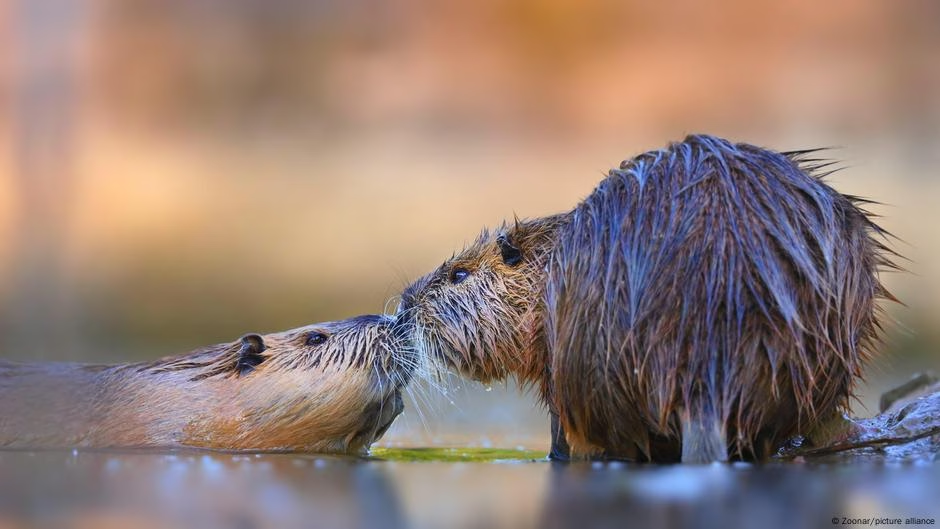First introduced to Europe in the 19th century by entrepreneurs looking to profit from Argentina’s fur farming industry, nutria were initially valued for their fur. Although the fur trade has declined, nutria have thrived and established themselves across Europe.
Local populations, descended from animals who escaped from farms or were simply allowed to run free, are now well established across most of the European continent. They’ve even been spotted as far afield as Ireland and Scandinavia.
What does a nutria look like?
With coarse, dark brown fur, webbed rear feet, and large front teeth, a nutria could, at first glance, be mistaken for its distant cousin, the beaver. But with an adult weight of between 4 and 9 kilograms (roughly 9 to 20 pounds) and a maximum length of 60 centimeters (23 inches), they are much smaller.
Instead of the beaver’s flat, paddle-like tail, the nutria’s rear appendage is thin and ratlike. Their distinctive front teeth are colored orange because they contain oxidized iron, which also makes them stronger.
Are nutria dangerous?
Nutria may look harmless, paddling along a local creek and munching on aquatic plants, especially roots and stems, or treating itself to the occasional snail or mussel. But their long, sharp incisors can cause serious damage, cutting to the bone.
They’re generally shy creatures, and most active at night, but can attack if curious humans or dogs get too close, potentially spreading parasites or bacterial diseases.
The greater danger is the natural environment and biodiversity. Nutria are agricultural pests, happy to munch on any and all nearby cereals, root crops, and saplings.
They are aggressive eaters; one nutria can consume up to 25% of its body weight every day. And because they favor roots and stems, they tend to destroy more plants than they actually eat.
Nutria burrows can make dikes, quays, and levees vulnerable to collapse during floods, and their presence can also disturb native ecosystems and endangered waterbird populations.
Why makes nutria such a problem in Europe?
Unlike beavers, which are native to North America and Europe, nutria aren’t endemic and are considered a nuisance on those continents.
The European Union added the nutria, under its scientific name Myocastor coypus, to its list of invasive alien species of concern in 2016, which includes “restrictions on keeping, importing, selling, breeding, growing and releasing[nutria] into the environment.
With no natural predators in Europe, controlling the nutria population is a challenge. They live an average of six years in the wild, and they’re quite fertile. They can breed throughout the year, and with multiple litters a nutria mother can have an average of 15 young per year.
The European nutria population has exploded in recent years, and not just because they feel at home. Nutria thrive in [warmer temperatures], and with winters becoming milder due to climate change, they’ve been able to gain a pawhold further and further north.
On the plus side, Europe’s nutria boom is helping to control the burgeoning population of the equally invasive muskrat. The animals compete for the same habitat, and the larger nutria usually wins out.
What’s being done to stop them?
Many countries in Europe have introduced monitoring and management programs, in an attempt to keep nutria populations in check and stop new communities from springing up. These involve traps and hunting, though the latter can be dangerous for humans and other animals in natural parks and urban areas.
Some people have recommended putting nutria on the menu. In the US, the Louisiana Department of Wildlife and Fisheries has even published a list of suggested recipes from a 1963 cookery book, including nutria chili, stuffed nutria hindquarters, and smoked nutria and andouille sausage gumbo.
Edited by: Tamsin Walker







